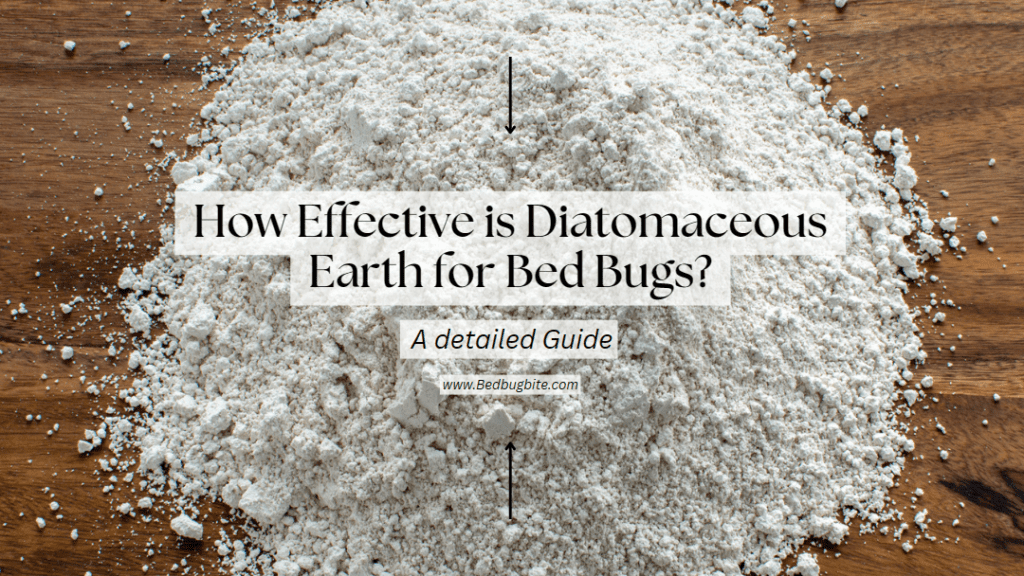Introduction
Are you struggling with a persistent bed bug problem and wondering if diatomaceous earth could be the solution you’ve been searching for? You’re not alone. Diatomaceous earth has become a popular choice in the realm of pest control, often praised for its natural composition and minimal environmental impact. Yet, the critical question remains: How effective is diatomaceous earth for bed bugs? Understanding the efficacy of this treatment can make a significant difference in your battle against these troublesome pests. In this comprehensive guide, we’ll dive into the science behind diatomaceous earth, reveal tips for optimal application, and provide real-world case studies that unveil its effectiveness—or lack thereof—in exterminating bed bugs. Armed with this knowledge, you’ll be better equipped to decide whether diatomaceous earth is the right solution for your specific bed bug problem.
The importance of tackling bed bugs effectively cannot be overstated. According to a study by the United States Environmental Protection Agency, bed bugs are more than just a household nuisance; they’re a public health issue that can lead to skin irritation, allergic reactions, and increased stress. With the stakes this high, you need reliable information to guide your extermination efforts, and that’s exactly what this guide aims to offer.
Your journey to a bed-bug-free life starts here, so read on to discover whether diatomaceous earth is the miracle cure you’ve been searching for.
What is Diatomaceous Earth?
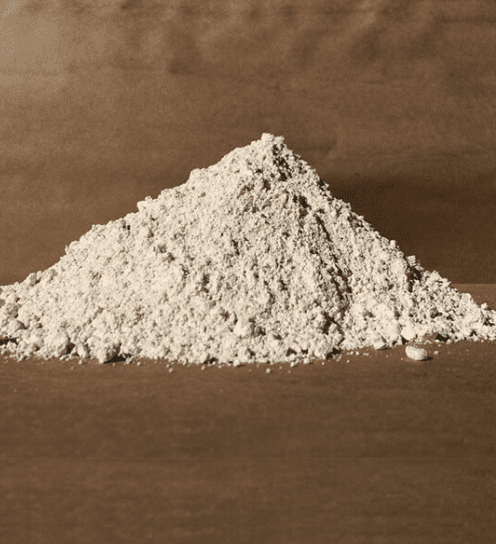
Diatomaceous earth is a naturally occurring, fossilized substance primarily composed of silica. If you’ve been grappling with a bed bug infestation, you might have heard of this remedy, but do you know what it is? Diatomaceous earth originates from the remains of diatoms, tiny aquatic organisms whose skeletons are rich in silica. It’s this unique composition that lends itself to various uses, not just in pest control, but also in products like toothpaste and as an agricultural soil treatment.
Definition and Main Components
Silica, the active ingredient in diatomaceous earth, is the secret to its pest-killing prowess. Comprising more than 80% of its makeup, silica acts as a desiccant, effectively drying out bed bugs that encounter it. You might be surprised to learn that diatomaceous earth also contains small amounts of other minerals like alumina and iron oxide, which contribute to its structure and stability.
Types of Diatomaceous Earth: Food Grade vs. Pool Grade
There are different grades of diatomaceous earth available on the market, namely food grade and pool grade. While pool grade is primarily used for filtration purposes in swimming pools and contains a higher amount of silica, food grade diatomaceous earth is the one you’ll want to focus on for bed bug extermination. It’s a safer option that’s effective yet minimally toxic to humans and pets.
The Science Behind Its Insect-Killing Properties
What makes diatomaceous earth a potent weapon against bed bugs is its mechanical action. Unlike chemical pesticides that poison bed bugs, diatomaceous earth works by breaking down the waxy layer on the insect’s exoskeleton, causing dehydration and eventual death. According to a study by the Journal of Economic Entomology, diatomaceous earth can effectively control bed bug adults, nymphs, and even resistant strains, provided it’s applied correctly.
By understanding the nature and properties of diatomaceous earth, you’re taking a crucial step toward making an informed decision on how to tackle your bed bug problem. Whether you’re a homeowner seeking relief from an infestation or a pest control professional looking to broaden your treatment options, this comprehensive guide is your go-to resource.
How Does Diatomaceous Earth Affect Bed Bugs?
If you’re considering diatomaceous earth as a treatment, it’s essential to grasp how this substance interacts with bed bugs. Does it serve as a quick knockout punch, or is it more of a gradual remedy? In this section, we will delve into the specifics of how effective Diatomaceous Earth is for bed bugs, breaking down the physical mechanisms involved, the timeline for results, and the factors that can influence its effectiveness.
Physical Mechanism: How Diatomaceous Earth Damages the Exoskeleton of Bed Bugs
The most fascinating aspect of diatomaceous earth’s action against bed bugs is its physical mechanism. Unlike chemical solutions that work through poisoning, diatomaceous earth disrupts the protective waxy layer of the bed bug’s exoskeleton. This leads to dehydration, as the insect’s bodily fluids evaporate, ultimately causing death. Think of it as a non-toxic armor-piercing weapon that neutralizes bed bugs without harming humans or pets.
Timeframe: How Long Does It Take for Diatomaceous Earth to Kill Bed Bugs?
Patience is key when using diatomaceous earth. Although it starts working upon contact, the time it takes to fully eliminate bed bugs can vary. Generally, you can expect to see results within 4 to 10 days, depending on factors such as the severity of the infestation and environmental conditions. Timing is critical; therefore, periodic checks are recommended to assess the treatment’s progress.
Factors Affecting Efficacy: Humidity, Application, and More
Certain factors can either improve or hinder diatomaceous earth’s effectiveness. High levels of humidity can diminish its desiccant properties, making it less effective. Similarly, improper application — like using too much or too little — can also influence its success rate. A study from the University of Kentucky reveals that diatomaceous earth is most effective when used in conjunction with other methods, especially in humid environments.
Armed with this detailed understanding of how diatomaceous earth affects bed bugs, you’re one step closer to making an informed choice about its role in your extermination strategy. By considering the physical mechanisms, timeframe, and influencing factors, you can better tailor your approach to eliminating these persistent pests.
Application Tips for Optimal Results
To ensure the utmost effectiveness when employing diatomaceous earth for bed bug control, a strategic approach to its application is imperative. Strategically applying diatomaceous earth is an essential aspect of harnessing its potential to combat bed bug infestations. Proper application maximizes its efficiency and minimizes any unintentional risks. Here are key guidelines to follow for achieving optimal results:
Where to Apply
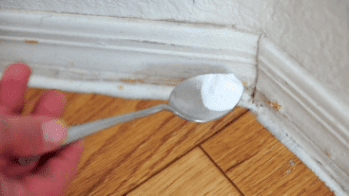
Identifying the target areas for diatomaceous earth application is the initial step. Bed bugs tend to congregate in specific spaces, such as cracks, crevices, and dark corners. Focus on treating bed frames, mattress seams, and areas around baseboards and furniture. These are common hiding spots that bed bugs inhabit. By applying DE in these areas, you create a barrier that intercepts and eradicates bed bugs as they traverse the treated surfaces.
How to Apply
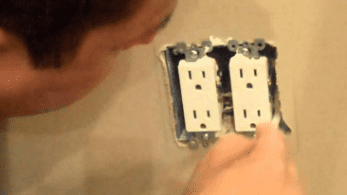
Two primary methods of application—spraying and dusting—are available for diatomaceous earth. Spraying involves mixing DE with water to create a solution that can be applied using a sprayer. This method is suitable for treating larger surfaces and areas that are not conducive to dusting. On the other hand, dusting entails using a bulb duster or a similar tool to lightly coat surfaces with a thin layer of DE. Dusting is particularly effective for targeting tight spaces and surfaces where bed bugs are likely to crawl. It allows for more precise coverage, ensuring that bed bugs encounter the diatomaceous earth.
Frequency of Application
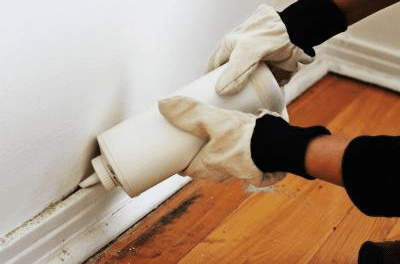
To maintain an effective barrier against bed bugs, regular reapplication of diatomaceous earth is recommended. Depending on factors such as humidity levels and the severity of the infestation, the protective layer of DE may lose its potency over time. Generally, reapply diatomaceous earth every few weeks or as needed to maintain its effectiveness. Regular reapplication ensures that any newly hatched bed bugs or those that have evaded the initial treatment encounter the abrasive particles, ultimately leading to their demise.
By adhering to these application tips, you can harness the full potential of diatomaceous earth as an integral part of your bed bug control strategy. Taking these steps not only enhances its effectiveness but also contributes to a safer and more successful approach to tackling bed bug infestations.
Safety Measures When Using Diatomaceous Earth
While diatomaceous earth is celebrated for its natural and non-toxic properties, it’s essential to implement safety measures to ensure its proper handling and application. By adhering to these precautions, you can mitigate potential risks and make your experience with diatomaceous earth a safe and successful one:
Safety Gear and Attire
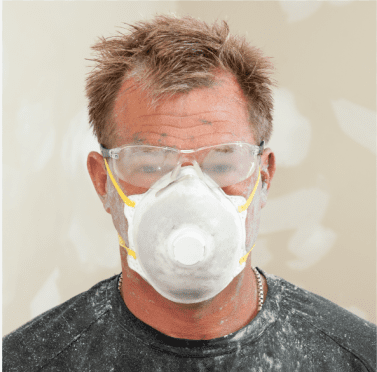
When working with diatomaceous earth, protective gear is your first line of defense. Wear a mask to prevent inhaling fine DE particles, and use gloves to avoid direct skin contact. These precautions minimize the likelihood of respiratory irritation and skin sensitivity. Goggles or protective eyewear can prevent DE particles from coming into contact with your eyes, offering an added layer of safety.
Precautions to Avoid Inhalation or Ingestion
During application, take care to minimize dust and the potential for inhalation. Start by mixing diatomaceous earth in a well-ventilated area to prevent airborne particles from accumulating. While dusting, use gentle and controlled motions to prevent excessive dispersal of DE particles. Additionally, avoid activities that might inadvertently disperse particles, such as blowing on the treated surfaces.
In terms of ingestion, it’s crucial to prevent accidental consumption. Store diatomaceous earth in sealed containers and keep them out of reach of children and pets. Ensure that any food or beverage containers are not contaminated with DE particles and wash your hands thoroughly after handling diatomaceous earth.
Steps in Case of Accidental Exposure
Despite the precautions taken, accidents can happen. If you experience skin irritation, wash the affected area with water and mild soap. If DE encounters your eyes, flush them thoroughly with water for at least 15 minutes and seek medical attention if irritation persists. In case of accidental inhalation, move to an area with fresh air and rest. If severe symptoms arise, seek medical assistance promptly.
By adhering to these safety measures, you can confidently utilize diatomaceous earth as an effective and safe tool in your fight against bed bug infestations. Prioritizing your safety and well-being ensures that your experience with diatomaceous earth remains positive and risk-free.
Comparing Diatomaceous Earth to Other Bed Bug Treatments
When it comes to bed bug extermination, there are multiple avenues one can take. However, the effectiveness and safety of these methods can vary significantly. In this section, we will evaluate how diatomaceous earth stands in comparison to other commonly employed bed bug treatments, namely chemical insecticides, and heat treatment.
Chemical Insecticides: Pros and Cons
Chemical insecticides are often the go-to option for quick relief from bed bugs. They are highly effective and act fast, killing bed bugs in all life stages. However, their downsides are equally significant. Chemicals such as pyrethroids can be toxic to humans and pets, necessitating careful handling and application. Moreover, there’s a growing concern over bed bugs developing resistance to chemical treatments, reducing their long-term effectiveness.
Heat Treatment: Pros and Cons
Heat treatment involves raising the temperature in the affected area to levels lethal for bed bugs—usually above 120°F. This method is highly effective and environmentally friendly, as it uses no chemicals. However, the cost can be prohibitive, and there is the possibility of heat-damaged belongings or even structural elements of your home. Additionally, heat treatment often requires professional assistance, making it less feasible for those looking for a DIY solution.
Diatomaceous Earth: Effectiveness and Safety
Diatomaceous earth offers a middle ground between chemical and heat treatments. While not as instantaneously effective as chemical insecticides, it is considerably safer for humans and pets. It’s also cost-effective and easy to apply, making it accessible for DIY enthusiasts. Unlike chemical treatments, bed bugs have not shown resistance to diatomaceous earth, ensuring its lasting effectiveness. However, it is crucial to note that diatomaceous earth works best in low-humidity environments and may require repeated applications to be fully effective.
In summary, while chemical insecticides and heat treatments have their own sets of advantages and drawbacks, diatomaceous earth stands as a reliable, safe, and economical option for bed bug control. By understanding the pros and cons of each treatment, you can make an informed decision that best suits your specific bed bug extermination needs.
Real-world Case Studies and Testimonials
If you’re skeptical about the efficacy of diatomaceous earth in tackling bed bug issues, real-world case studies and testimonials can offer valuable insights. These real experiences can help you gauge whether diatomaceous earth is the right option for you.
- Case Study 1: Success with Diatomaceous Earth
- In a residential setting plagued by a moderate bed bug infestation, food-grade diatomaceous earth was applied to bed frames, cracks, and crevices. After a week of daily application, a significant reduction in bed bug activity was observed. By the end of three weeks, the infestation was nearly eradicated, confirming the effectiveness of diatomaceous earth when used consistently and correctly.
- Case Study 2: Ineffectiveness Due to Improper Application
- In contrast, another household applied diatomaceous earth inconsistently and failed to address high-humidity conditions, which rendered the treatment largely ineffective. The bed bug infestation persisted, underscoring the importance of proper application and optimal conditions for success.
- Testimonials: Experiences of People Who Have Tried Diatomaceous Earth
- Many people who have resorted to diatomaceous earth for bed bug control report favorable outcomes. “It took a little time, but it was worth it,” says a satisfied user, highlighting the need for patience and consistent application.
- I personally used DE when I was combatting my Bed Bug infestation. Diatomaceous Earth was the only treatment that showed favorable results and within 2 weeks, we were no longer being bitten and within a month we had no more signs of bed bugs.
Conclusion
Understanding the effectiveness of diatomaceous earth against bed bugs is crucial for anyone dealing with an infestation. While it may not offer the rapid results that chemical insecticides provide, its safety, cost-effectiveness, and lack of resistance make it a viable option for long-term bed bug control. The key to its success lies in proper application, adequate coverage of affected areas, and attention to environmental factors like humidity. If you’re considering this treatment, weigh it against other options and apply it diligently for the best results. For more resources, consult our Blog. We have articles on alternative bed bug treatments. As well as safety precautions to get a comprehensive understanding of bed bug extermination strategies.

